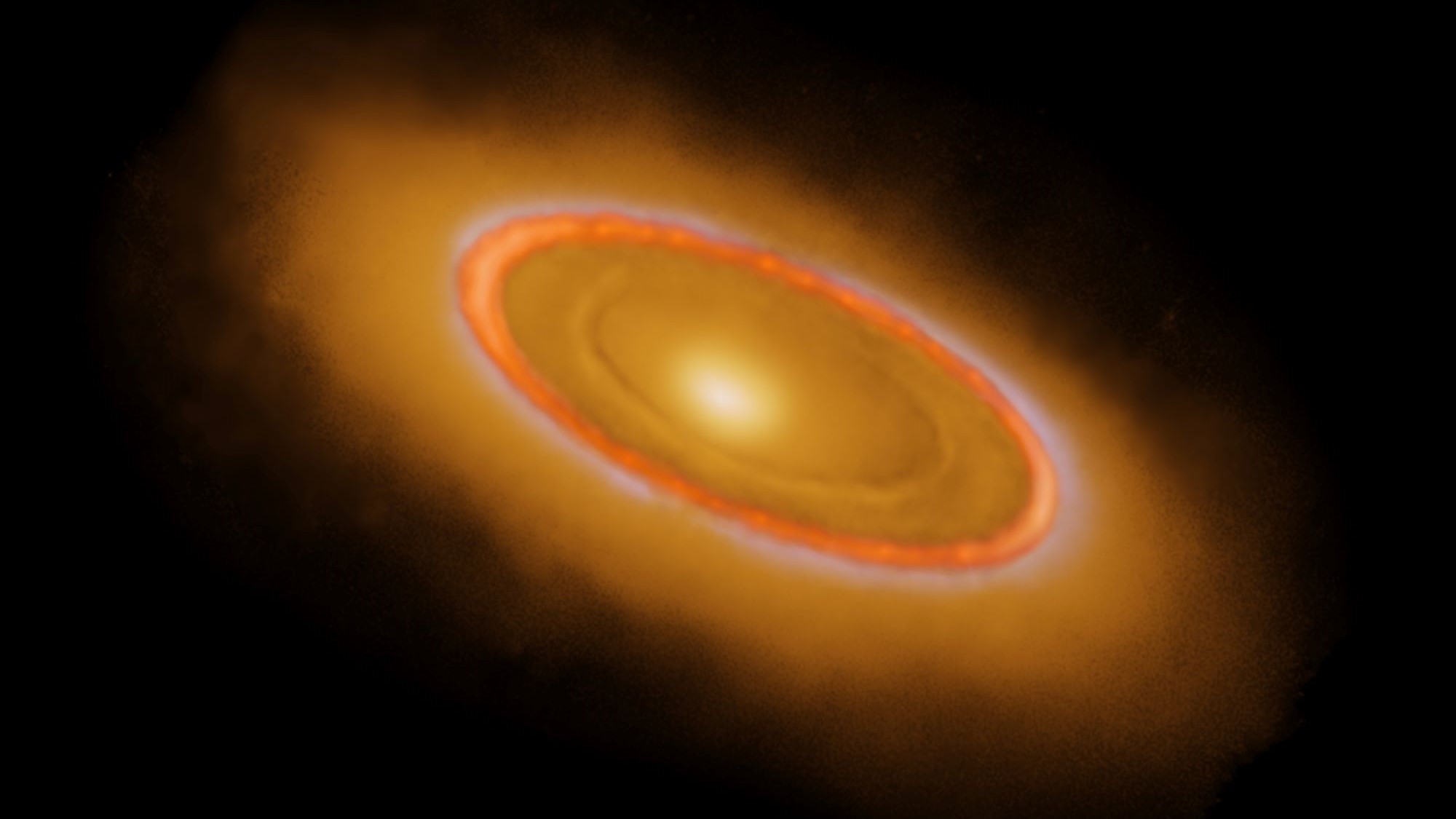

Our asteroid belt is home to more than a million space rocks, varying in size from a dwarf planet to dust particles, which float between Jupiter and Mars. Astronomers have just discovered another such belt—but this one circles a different star, not our sun.
NASA’s James Webb Space Telescope (JWST) detected this asteroid belt around the star Fomalhaut, only 25 light-years away. For years, scientists have studied Fomalhaut’s debris disk, a collection of rocky, icy, dusty bits from all the collisions that happen while planets are being created. This new data, published today in Nature Astronomy, shows the system in unprecedented detail, uncovering fingerprints of hidden worlds and evidence for planets smashing together.
Many telescopes have pointed to Fomalhaut over the years: the Spitzer Space Telescope, the Atacama Large Millimeter Array (ALMA) in the high desert of Chile, and even the Hubble Space Telescope. Fomalhaut, which is much younger than our sun, may be a good likeness of our solar system near birth; since astronomers can’t time travel back to our sun’s formation, they instead observe other young stars, using these still-forming planetary systems as examples of what the process of making planets can look like.
Fomalhaut is an appealing choice to astronomers because it’s nearby, meaning it’s easier for astronomers to notice fine details. “This system was definitely one of the first we wanted to observe with JWST,” says co-author Marie Ygouf, research scientist at NASA’s Jet Propulsion Lab.

Before JWST, other observations revealed that Fomalhaut is surrounded by a ring of dust analogous to our own solar system’s Kuiper Belt, which contains all the little bits of ice and rock beyond Neptune. The new data from NASA’s superlative space telescope spot not only this outer ring, but also an inner ring more analogous to the asteroid belt. There’s a third feature, too—a giant clump of dust, lovingly referred to as the Great Dust Cloud.
[Related: These 6 galaxies are so huge, they’ve been nicknamed ‘universe breakers’]
Between Fomalhaut’s outer Kuiper-Belt-like ring and its inner asteroid-belt-like ring is a gap. “The new gap that we see hints at the presence of an ice-giant mass planet, which would be an analog of what we see in the solar system,” like Neptune or Uranus, says lead author András Gáspár, astronomer at the University of Arizona. This unseen planet could be “carving out the gaps” via gravity, explains fellow Arizona astronomer and co-author Schuyler Wolff.
Fomalhaut’s asteroid belt has a curious tilt, appearing at a different angle from the outer ring, as though something knocked it off kilter. A knock, in fact, might explain the misalignment, the researchers say—a major collision could have tilted the asteroid belt, creating the massive dust cloud, too.
All signs in Fomalhaut “point to a solar system that is alive and active, full of rocky bodies smashing into each other,” says co-author Jonathan Aguilar, staff scientist at Space Telescope Science Institute, home of JWST’s mission control.
JWST was uniquely suited to take these photos of Fomalhaut’s dust. The dust glows brightest in the mid-infrared, at long wavelengths unreachable by most other observatories. A particularly powerful telescope is necessary, too, to resolve enough details—and JWST is the only scope with both these features. The space telescope’s Mid-Infrared Instrument (MIRI) also has a coronagraph, a small dot to block out a bright star and reveal the surrounding dust.
“Mid-infrared wavelengths are so important for debris disk observations because that’s where you observe dust emission, and the distribution of dust tells you a lot about what’s going on,” says Aguilar. The new view of Fomalhaut “showcases the scientific power of JWST and MIRI even just a year into operations,” he adds.
[Related: NASA sampled a ‘fluffy’ asteroid that could hold clues to our existence]
It’s certainly interesting to see what our solar system may have looked like in its infancy—but Fomalhaut isn’t an exact clone. Fomalhaut’s Kuiper Belt and asteroid belt doppelgangers are more spread out and contain more material than those features in our solar system. Although Fomalhaut has more movement and smashing than our solar system does now, our planets had a similar phase in the distant past, known as the Late Heavy Bombardment. Astronomers hope debris disks seen by JWST will help them figure out the details of how solar systems are born, and how they grow up to look like our own set of planets.
“We are at this frontier of unexplored territory, and I’m especially excited to see what JWST finds towards planet-forming disks,” says University of Michigan astronomer Jenny Calahan, who was not involved in the new findings. “Looking at these JWST images I was reminded of the moment that I got glasses for the first time,” adds Calahan. “It just changes your whole perspective when the world (or a debris disk) comes into focus at a level that you aren’t used to.”
